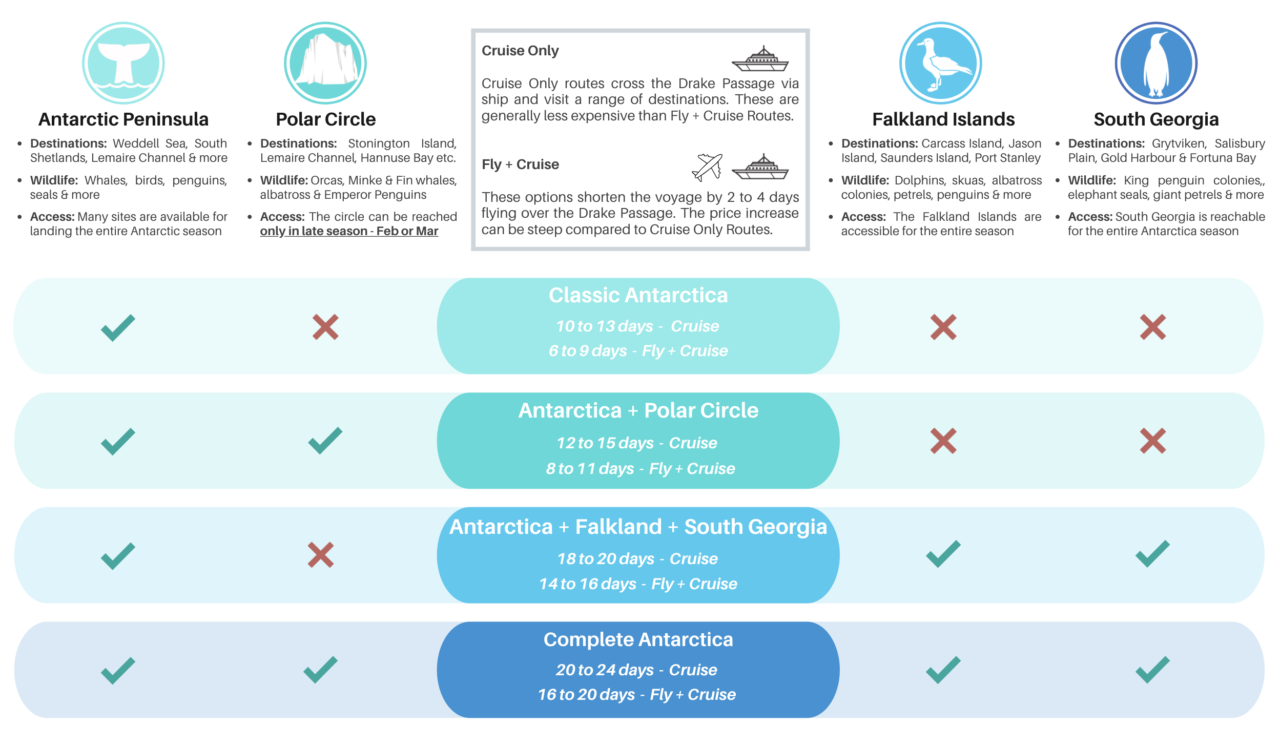After determining when to visit Antarctica, you need to decide how to get there and which route and destinations you want to include on your expedition.
The chart below gives a simple overview of the four main routes on offer – Classic Antarctica, Antarctica & Polar Circle, Antarctica + Falklands + South Georgia, and Complete Antarctica. We have listed out the wildlife and geographic highlights of each option and provided an idea of how many nights you’ll need for each expedition. Continue reading below for an in-depth explanation.
This routes comparison chart doesn’t include every detail you should consider. The best option is to give us a call so we can help you determine which destinations will best suit your desired experience.
Antarctica Routes Comparison Chart
Cruise Only vs Fly & Cruise
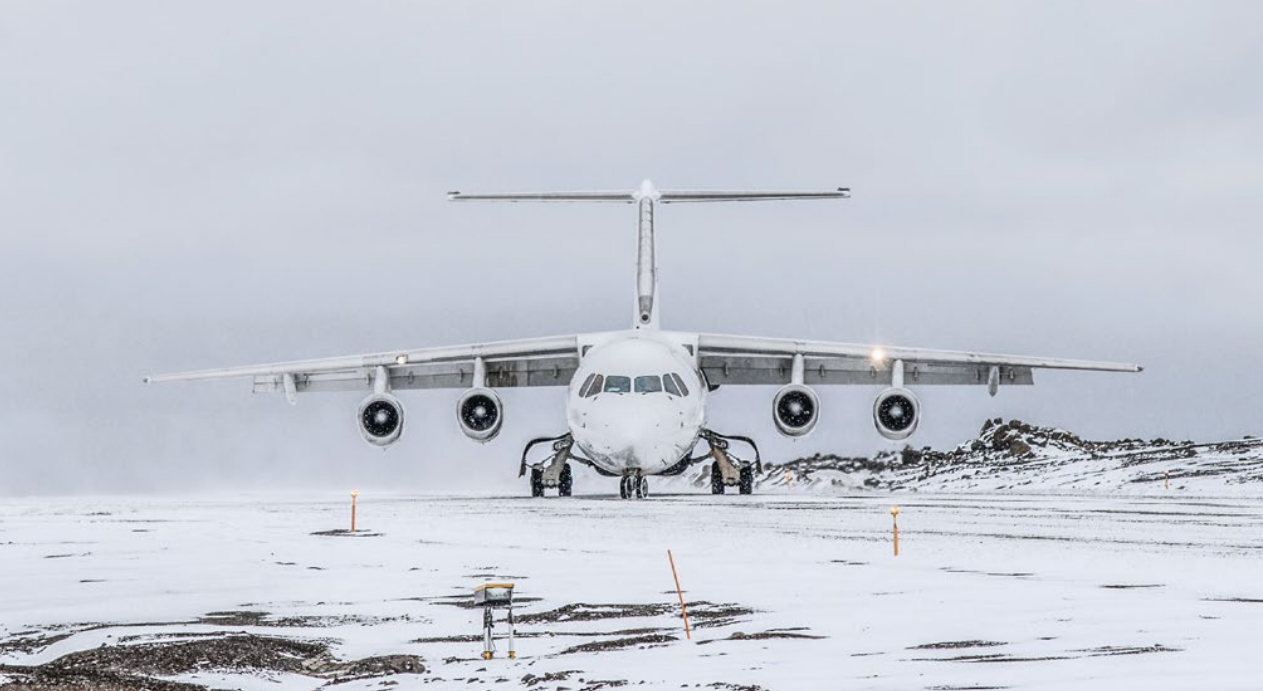
The traditional way to visit the white continent is Cruise Only – by boarding your ship in either Ushuaia, Argentina or Punta Arenas, Chile. Occasionally itineraries depart from Puerto Madryn, Argentina which is known for incredible whale watching. Expeditions then head south across the Drake Passage for the next two days if going directly to Antarctica, or cruise to the Falklands or South Georgia first before continuing to the Antarctic Peninsula.
While all itineraries in Antarctica include cruising, there are many itineraries that combine flying from South America to Antarctica or South Georgia then boarding your ship. In general, Fly & Cruise options are pricier, but it cuts off anywhere from 2 to 4 days crossing the Drake Passage. If you are time poor or wary of sea sickness, this is a great way to focus your expedition time on the Antarctica peninsula and cut the 4 extra days crossing the Drake.
The Drake Passage is the body of water between the southern most tip of South America and the South Shetland Islands, part of the Antarctic Peninsula. The crossing takes approximately 2 days in each direction and due to the meeting currents, wind and unpredictable weather, it can produce large swells at any time of year. On the other hand, it is rich in wildlife with dolphins, whales and many kinds sea birds and can provide fantastic viewing as you venture across the sea. There are some Fly & Cruise options that fly just one direction so you will cross the Drake once in plane, and once by sea.
Antarctica Destinations & Routes
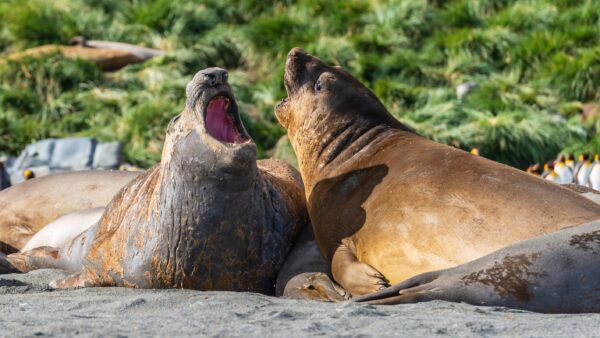
In general, all Antarctica cruises include the Antarctic Peninsula – its many islands, bays and channels. The Classic Antarctica route ranges 10-13 days Cruise Only or 6-9 days for Fly & Cruise.
In addition to the peninsula, there are voyages that explore the Falkland Islands and the remote South Georgia and the South Sandwich Islands. These are rugged and beautiful lands teeming with wildlife experiences accessible during the whole Antarctica season. Routes that include these are longer at 18-24 days and are generally more expensive than Classic Antarctica routes.
Lastly, there are Polar Circle Routes which tick the bucket list for many adventurers. In order to cross the magic line – 66°33′48.2″ south of the Equator – the heavy ice needs to have melted. Generally, from January through to the end of the season in March, itineraries can include and safely access the Polar Circle.
Learn More About Antarctica Voyages

Size
Over 150 different ships travel annually to Antarctica ranging from small expedition ships to giant ocean liners – these experiences vary greatly.
Learn more about how to pick the right Antarctica ship size for your adventure as this is a crucial aspect of your Antarctica adventure!
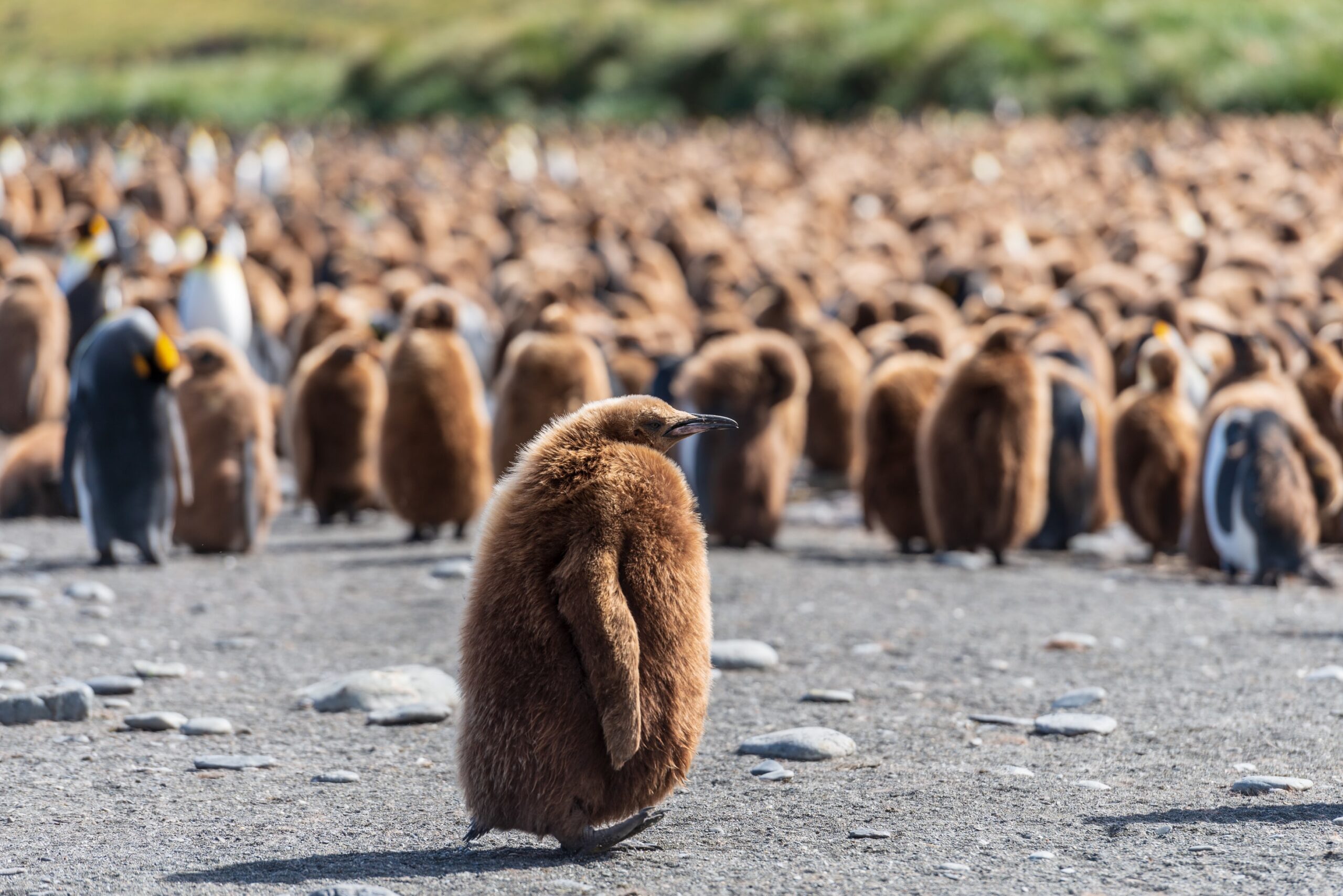
Seasonality
The travel season to Antarctica is approximately 5 months long from late October to late March. Each month brings different prices, highlights and potential experiences.
Icy conditions at the start of the season mean you cannot reach the Polar Circle, but the trade off is a stunningly pristine landscape.
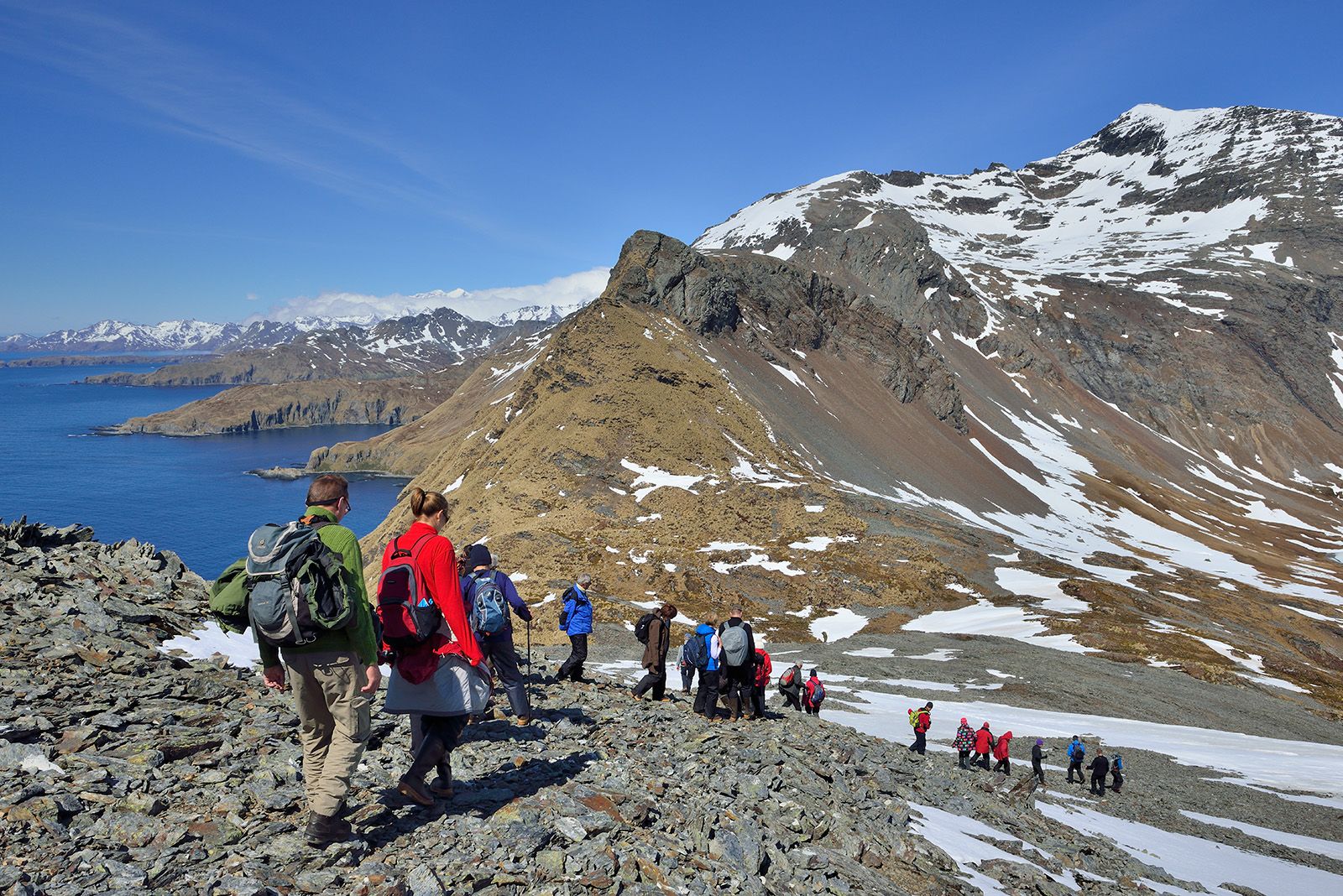
Expeditions
Expedition ratings refer to the quality, variety and number of daily excursions offered. In general, ships with lower guest numbers and more zodiacs means you’ll spend more time off the ship.
Only 100 guests at a time can be ashore per site. For ships with more guests, there may be extra waiting involved.
